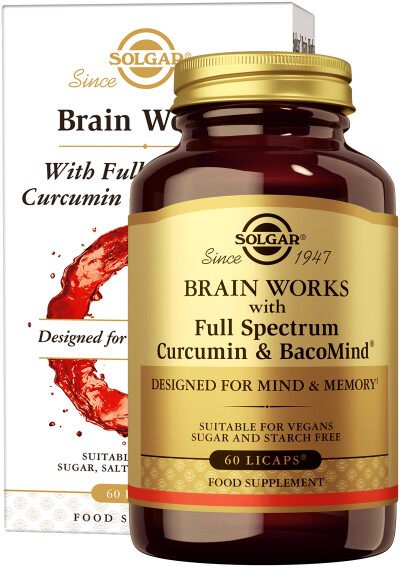Powerful Formulas

- Formula for the ability to concentrate
- Nootropic with ashwagandha, ginkgo, bacopa, caffeine, pterostilbene and lutein

- Formula for the brain
- BacoMind®, patented and scientifically researched Brahmi extract (Bacopa monnieri)

- Formula for stressful situations
- With 400 mg of GABA, valerian and a complete vitamin B comple

- Formula for the brain
- Contains 200 mg of vitamin B2, other B vitamins, magnesium, botanicals and D3
8 Best Supplements for the Nervous System
















Many nutrients have a positive influence on the nervous system. Here is an overview of the most important supplements. Or read more about it below.

How important is the nervous system?
The nervous system regulates much of the body's functions. The anatomical division of the nervous system consists of the central nervous system and the peripheral nervous system. The central nervous system (CNS) consists of the brain and the spinal cord.
The CNS is the coordinator; it receives information from the senses and from the peripheral nerves and ensures that this is communicated to various bodily functions.
The peripheral nervous system (PNS) can be divided into sensory and motor nerves.
Sensory nerve cells (neurons) transport impulses from peripheral to central. Motor nerve cells carry motor impulses from the CNS to the muscles and glands, the periphery.
The CNS consists of nerves that connect the CNS to various parts of the body. It includes 31 pairs of spinal nerves and 12 pairs of cranial nerves.
One of the most important is the vagus nerve. This cranial nerve plays a role in stress, feeling safe and connected to others. It connects our brain to all major organs.
Autonomic and the animate
In addition, there is another functional division of the nervous system, it consists of the autonomic and the animate nervous system. The autonomic nervous system is also called the involuntary nervous system, it is not under the influence of the will and deals with breathing, heartbeat and digestion.
The animale part is also called the random nervous system, it controls the random muscles, these are the skeletal muscles, we can influence them ourselves.
The autonomic nervous system can be divided into (ortho)sympathetic and parasympathetic. The sympathic activates (stimulation) and the parasympathetic calms (inhibition). The sympathic is active in handling stress and the parasympathetic is responsible for rest and recovery.
The nervous system is made up of neurons (nerve cells). Neurons consist of a cell body, dendrites, an axon, axon ends and synapses. Signals are received by at one end of the neuron; the dendrites, then the information is transported by nerve fibers called the axon. At the end of a neuron is the axon end.
The axon is protected by a myelin sheath. This is a protective layer of fat. If this myelin sheath is damaged, it slows down stimulus conduction and interferes with nerve function.
The axon is protected by a protective layer of fat.
The transmission of electrical stimuli takes place in the synapse cleft, which is located between 2 neurons. In the space of the synapse cleft are neurotransmitters that transmit the information. Neurotransmitters are also called messenger substances.
There are 2 types of neurotransmitters; stimulatory (excitatory); such as dopamine and adrenaline and inhibitory (inhibitory); such as GABA and serotonin.
Written by: Liesbeth Thoen
Reviewed and edited by: Peter Smeets
Updated on: April 23, 2022
